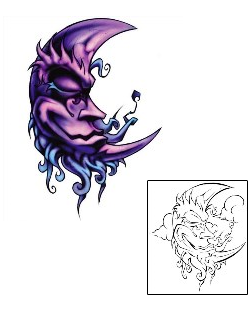The Moon is Earth's only natural satellite and the fifth largest natural satellite in the Solar System. Unlike the moons of other planets, the moon of the Earth has no proper English name other than ''the Moon''. The Moon is the only celestial body to which humans have travelled and upon which humans have landed. The first artificial object to escape Earth's gravity and pass near the Moon was the Soviet Union's Luna 1, the first artificial object to impact the lunar surface was Luna 2, and the first photographs of the normally occluded far side of the Moon were made by Luna 3, all in 1959. The first spacecraft to perform a successful lunar soft landing was Luna 9, and the first unmanned vehicle to orbit the Moon was Luna 10, both in 1966. The United States Apollo program achieved the only manned missions to date, resulting in six landings between 1969 and 1972. Human exploration of the Moon ceased with the conclusion of the Apollo program, although several countries have announced plans to send people or robotic spacecraft to the Moon.
The Moon has figured in many mythologies, often paired or contrasted with the Sun. The monthly cycle of the moon, in contrast to the annual cycle of the sun's path, has been implicitly linked to women's menstrual cycles by many cultures, although rarely explicitly stated. Many of the most well-known mythologies feature female lunar deities, such as the Greek goddesses Selene and Phoebe and their Olympian successor Artemis, their Roman equivalents Luna and Diana, or the Thracian Bendis. These cultures almost invariably featured a male sun god. Male lunar gods are also frequent, such as Nanna or Sin of the Mesopotamians, Mani of the Germanic tribes, Thoth of the Egyptians, theJapanese god Tsukuyomi, Rahko of Finns and Tecciztecatl of the Aztecs. These cultures usually featured female Sun goddesses.
In ancient Egypt, we find the earliest written records of the moon's influence in the lives of humans. Before Sun worship, the Egyptians worshipped the moon. In ceremonies and processions, her headdress was a moon with a pair of cow's horns symbolizing motherhood, since Isis was also the representative of Nature. The ancient Egyptians also portrayed the moon as a cat, not because of any physical resemblance, but because both were lights in the dark the cat could see at night, and the moon shed light in the night sky.
The words ''lunacy'', ''lunatic'', and ''loony'' are derived from Luna because of the folk belief in the moon as a cause of periodic insanity. It is a feature of modern belief that shape shifters such as werewolves drew their power from the moon and would change into their bestial form during the full moon, but this feature is largely absent from older folklore. . A ''Blue Moon'' is the third full moon in a three-month calendar season that has four full moons, or the second of two full moons occurring in the same month. Because this rarely happens, the expression ''once in a Blue Moon'', symbolizes something that doesn't happen very often.
Moon tattoos usually symbolize feminine aspects because of the moon's ties to the woman's menses and traditional female deities. The moon can also be a common element in night themed tattoos or ones that include wolves, owls or death.










